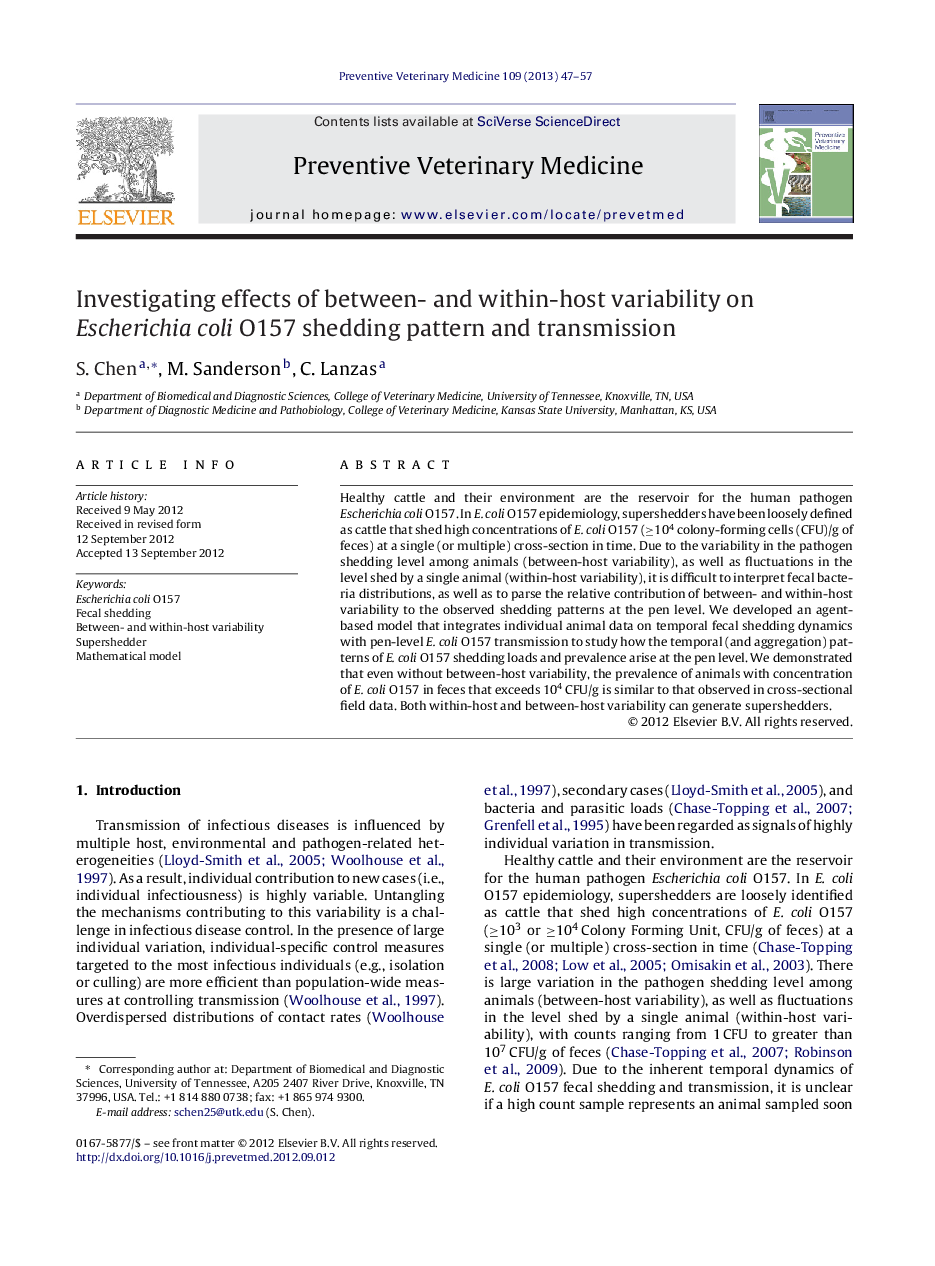| کد مقاله | کد نشریه | سال انتشار | مقاله انگلیسی | نسخه تمام متن |
|---|---|---|---|---|
| 5793928 | 1554184 | 2013 | 11 صفحه PDF | دانلود رایگان |

Healthy cattle and their environment are the reservoir for the human pathogen Escherichia coli O157. In E. coli O157 epidemiology, supershedders have been loosely defined as cattle that shed high concentrations of E. coli O157 (â¥104 colony-forming cells (CFU)/g of feces) at a single (or multiple) cross-section in time. Due to the variability in the pathogen shedding level among animals (between-host variability), as well as fluctuations in the level shed by a single animal (within-host variability), it is difficult to interpret fecal bacteria distributions, as well as to parse the relative contribution of between- and within-host variability to the observed shedding patterns at the pen level. We developed an agent-based model that integrates individual animal data on temporal fecal shedding dynamics with pen-level E. coli O157 transmission to study how the temporal (and aggregation) patterns of E. coli O157 shedding loads and prevalence arise at the pen level. We demonstrated that even without between-host variability, the prevalence of animals with concentration of E. coli O157 in feces that exceeds 104 CFU/g is similar to that observed in cross-sectional field data. Both within-host and between-host variability can generate supershedders.
Journal: Preventive Veterinary Medicine - Volume 109, Issues 1â2, 1 April 2013, Pages 47-57